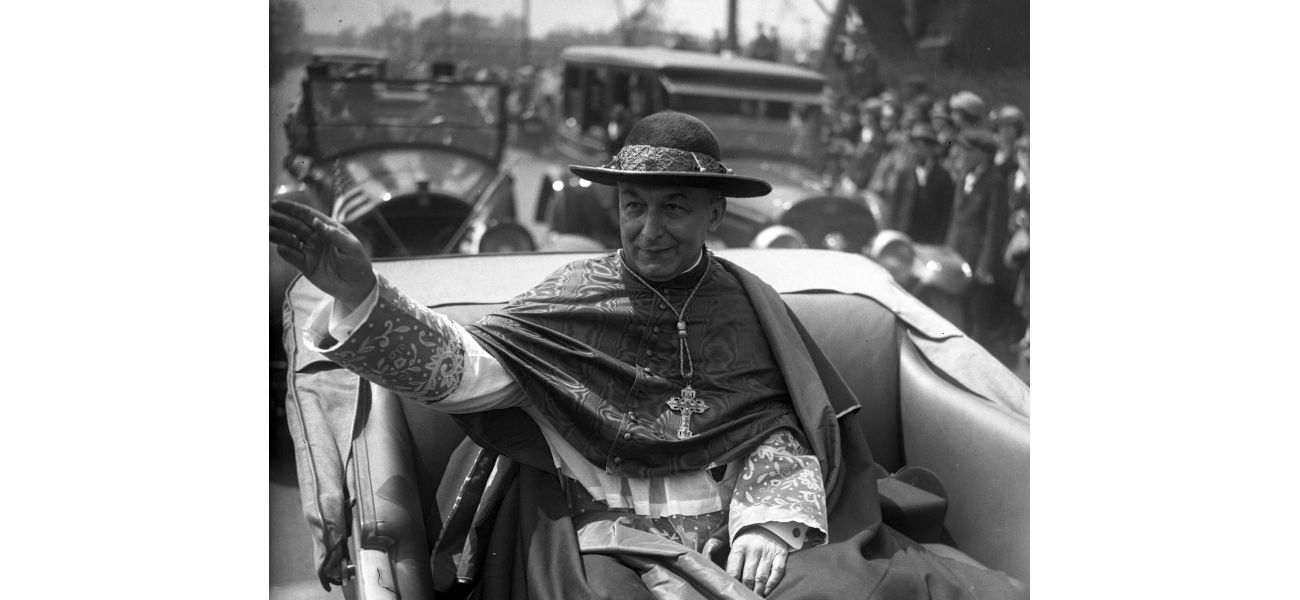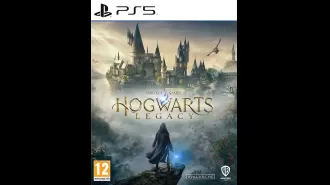1924 favorites from Chicago Tribune chosen by Paul Durica
Paul Durica, Chicago History Museum's exhibition director, shares his reflections on a year of research and highlights his favorite Tribune archive stories from 1924.
December 26th 2024.

This week, we have a special guest writer for our newsletter. Paul Durica, the director of exhibitions at the Chicago History Museum, will be sharing his thoughts on his past year of research.
For the past 365 days, I have made it a habit to start my mornings by reading the Chicago Tribune...but not just any edition. I have been reading the newspaper from 100 years ago, in 1924.
My decision to do so stemmed from the realization that two significant events that have greatly influenced my work both occurred in 1924. These events were the infamous kidnapping and murder of 14-year-old Robert Franks by Nathan Leopold Jr. and Richard Loeb, dubbed the "crime of the century" at the time, and the passage of the most restrictive immigration legislation in US history by Congress.
As I delved deeper into the daily news from 1924, I found myself wondering about the lesser-known events that shaped that year. What could I learn by experiencing the year unfold, day by day, in real time? I discovered a year that still holds a strong influence on the city of Chicago. We are all living in the city that was shaped in 1924, whether we realize it or not. Our daily lives are intertwined with the events, buildings, and streets that were created or changed in that year.
However, despite the progress and advancements made, 1924 also serves as a warning. In Chicago, crime continues to plague our streets. In Washington, corruption runs rampant. And in Europe, authoritarianism is on the rise. We know the outcome of those who lived through 1924, but what will become of those who are living through 2024? That is a question for future historians to answer.
Now, onto a lighter topic. Our reader Daniel Knopfloch recently asked what songs best describe Chicago. I'd love to hear your thoughts on this as well. What is your favorite song about the city and why? Email us and your answer may be featured in an upcoming edition of the newsletter.
And now, let's take a look back at some of the top stories from 1924, as chosen by me, Paul Durica.
January 1924
On January 24th, the Chicago Daily Tribune announced plans for the John G. Shedd Aquarium to be built at Grant Park by the architectural firm Graham, Anderson, Probst and White.
Locally, philanthropists Kate Buckingham and John G. Shedd made generous donations to the South Park Commission, which would greatly impact the city.
Nationally, the infamous Teapot Dome scandal began to unfold in Washington.
Internationally, V.I. Lenin, the leader of the Soviet Union, passed away.
February 1924
In February, the film "Birth of a Nation" caused quite a stir in Chicago. The police shut down a screening of the film at the Auditorium Theatre, due to its controversial and racist content.
On a national level, former President Woodrow Wilson passed away.
And internationally, Adolf Hitler went on trial in Munich for his involvement in a failed coup the previous year.
March 1924
March brought big changes for Archbishop George Mundelein, who left Chicago to become a cardinal in Rome, making him the city's first.
Locally, the infamous Beulah Annan, who would later become the inspiration for the character Roxie Hart in "Chicago," killed her lover Harry Kalstedt.
Nationally, Harry K. Thaw was granted a new trial for the 1906 murder of architect Stanford White.
Internationally, the Tribune had the opportunity to interview Mahatma Gandhi shortly after his release from prison.
April 1924
On April 3rd, Beulah Annan confessed to the murder of Harry Kalstedt at the Hyde Park police station. This would later become the inspiration for the musical "Chicago."
Nationally, the US Senate passed a restrictive immigration bill.
Internationally, fascists gained power in Italian parliamentary elections.
May 1924
May saw the tragic funeral of 14-year-old Robert "Bobby" Franks, who was kidnapped and murdered by Nathan Leopold Jr. and Richard Loeb. Eight of his friends from the private school he attended served as pallbearers.
Locally, the Chicago Daily Tribune reported on the ongoing trial of Leopold and Loeb.
Nationally, the 50th running of the Kentucky Derby was won by a horse owned by Osage woman Rosa M. Hoots.
Internationally, several countries were competing for the "death ray" technology developed by British inventor Harry Grindell Matthews.
June 1924
In June, the Tribune reported on the upcoming Democratic National Convention, which would be held in New York.
Locally, the city celebrated the 50th anniversary of the Chicago Fire Department.
Nationally, the Republican National Convention was held in Cleveland.
Internationally, the Tribune reported on the ongoing conflict between China and Japan.
As you can see, 1924 was a year filled with both significant and lesser-known events that continue to shape the city of Chicago today. I hope you enjoyed this look back at history with me. Stay tuned for more stories and articles from the Chicago History Museum in future newsletters!
This week, we have a special guest writer for our newsletter - Paul Durica. Paul is the director of exhibitions at the Chicago History Museum and we have handed over the reins to him to share his thoughts and reflections on his past year of research.
For the last 12 months, Paul has started his day by reading the Chicago Tribune - but not the current edition. Instead, he has been diving into the corresponding edition from 100 years ago, in 1924. This decision was inspired by the realization that two significant events that shaped his work occurred in the same year. These events were the infamous kidnapping and murder of 14-year-old Robert Franks by Nathan Leopold Jr. and Richard Loeb, also known as the "crime of the century" at that time, and the passage of the most restrictive immigration legislation by the United States Congress.
Curiosity led Paul to wonder what else happened in 1924 and what he could learn by experiencing the year unfold day by day, in real time. He found that while some events from that year are still remembered, many meaningful moments have faded from memory. But what he discovered was a year that continues to shape Chicago in many ways. We still live in the city that came into existence in 1924 - the streets we walk, the buildings we enter, and the festivals and events we attend all have ties to that year.
However, Paul also sees 1924 as a warning. Despite many successes and advances, the year serves as a reminder of the dangers that can arise. In Chicago, crime is out of control, corruption runs rampant in Washington, and authoritarianism is on the rise in Europe. It is a stark reminder of what can happen when these issues are not addressed. While we know what became of the people who lived through that year, what will become of those who lived through 2024 is a question for future historians to answer.
Now, we want to hear from you - what is your ultimate Chicago playlist? A reader, Daniel Knopfloch, asked: "What songs describe the city in the best way?" We think it's a great question and we'd love to hear your thoughts. Send us an email and your answer might be featured in an upcoming edition of our newsletter.
But first, let's take a trip back in time and explore some of the headlines from 1924 in Chicago history.
In January, plans were announced for the John G. Shedd Aquarium to be built at Grant Park by Graham, Anderson, Probst and White. It was a significant development for the city, made possible by generous gifts from Kate Buckingham and John G. Shedd. But on a national and international scale, there were also major events happening. The Teapot Dome scandal was beginning to emerge in Washington, and V.I. Lenin died in Russia.
In February, a screening of the controversial film "The Birth of a Nation" was shut down by police at the Auditorium Theatre. This event sparked debates about censorship and freedom of speech. On a national and international level, former President Woodrow Wilson passed away and Adolf Hitler went on trial in Munich for his involvement in a failed coup.
March saw the elevation of Archbishop George Mundelein to cardinal - the first in Chicago's history. This was a significant moment for the city's Catholic community and also made headlines in national and international news. Also, this month, the U.S. Senate passed a restrictive immigration bill and the Tribune interviewed Mahatma Gandhi just after his release from prison.
In April, the infamous murder of Harry Kalstedt by Beulah Annan, the inspiration for the character Roxie Hart in "Chicago," took place. The U.S. Senate also passed a restrictive immigration bill and Fascists won big in Italian parliamentary elections.
May saw the tragic murder of 14-year-old Robert Franks by Nathan Leopold Jr. and Richard Loeb, which shook the city. On a national scale, the Kentucky Derby was won by Black Gold, a horse owned by Osage woman Rosa M. Hoots. And in the world of science, several nations were competing for the "death ray" technology developed by British inventor Harry Grindell Matthews.
As we enter June, let's take a moment to reflect on the past year and the events that have shaped our city. And as we look towards the future, let's learn from the lessons of 1924 and strive to create a better and more just society for all.
For the past 365 days, I have made it a habit to start my mornings by reading the Chicago Tribune...but not just any edition. I have been reading the newspaper from 100 years ago, in 1924.
My decision to do so stemmed from the realization that two significant events that have greatly influenced my work both occurred in 1924. These events were the infamous kidnapping and murder of 14-year-old Robert Franks by Nathan Leopold Jr. and Richard Loeb, dubbed the "crime of the century" at the time, and the passage of the most restrictive immigration legislation in US history by Congress.
As I delved deeper into the daily news from 1924, I found myself wondering about the lesser-known events that shaped that year. What could I learn by experiencing the year unfold, day by day, in real time? I discovered a year that still holds a strong influence on the city of Chicago. We are all living in the city that was shaped in 1924, whether we realize it or not. Our daily lives are intertwined with the events, buildings, and streets that were created or changed in that year.
However, despite the progress and advancements made, 1924 also serves as a warning. In Chicago, crime continues to plague our streets. In Washington, corruption runs rampant. And in Europe, authoritarianism is on the rise. We know the outcome of those who lived through 1924, but what will become of those who are living through 2024? That is a question for future historians to answer.
Now, onto a lighter topic. Our reader Daniel Knopfloch recently asked what songs best describe Chicago. I'd love to hear your thoughts on this as well. What is your favorite song about the city and why? Email us and your answer may be featured in an upcoming edition of the newsletter.
And now, let's take a look back at some of the top stories from 1924, as chosen by me, Paul Durica.
January 1924
On January 24th, the Chicago Daily Tribune announced plans for the John G. Shedd Aquarium to be built at Grant Park by the architectural firm Graham, Anderson, Probst and White.
Locally, philanthropists Kate Buckingham and John G. Shedd made generous donations to the South Park Commission, which would greatly impact the city.
Nationally, the infamous Teapot Dome scandal began to unfold in Washington.
Internationally, V.I. Lenin, the leader of the Soviet Union, passed away.
February 1924
In February, the film "Birth of a Nation" caused quite a stir in Chicago. The police shut down a screening of the film at the Auditorium Theatre, due to its controversial and racist content.
On a national level, former President Woodrow Wilson passed away.
And internationally, Adolf Hitler went on trial in Munich for his involvement in a failed coup the previous year.
March 1924
March brought big changes for Archbishop George Mundelein, who left Chicago to become a cardinal in Rome, making him the city's first.
Locally, the infamous Beulah Annan, who would later become the inspiration for the character Roxie Hart in "Chicago," killed her lover Harry Kalstedt.
Nationally, Harry K. Thaw was granted a new trial for the 1906 murder of architect Stanford White.
Internationally, the Tribune had the opportunity to interview Mahatma Gandhi shortly after his release from prison.
April 1924
On April 3rd, Beulah Annan confessed to the murder of Harry Kalstedt at the Hyde Park police station. This would later become the inspiration for the musical "Chicago."
Nationally, the US Senate passed a restrictive immigration bill.
Internationally, fascists gained power in Italian parliamentary elections.
May 1924
May saw the tragic funeral of 14-year-old Robert "Bobby" Franks, who was kidnapped and murdered by Nathan Leopold Jr. and Richard Loeb. Eight of his friends from the private school he attended served as pallbearers.
Locally, the Chicago Daily Tribune reported on the ongoing trial of Leopold and Loeb.
Nationally, the 50th running of the Kentucky Derby was won by a horse owned by Osage woman Rosa M. Hoots.
Internationally, several countries were competing for the "death ray" technology developed by British inventor Harry Grindell Matthews.
June 1924
In June, the Tribune reported on the upcoming Democratic National Convention, which would be held in New York.
Locally, the city celebrated the 50th anniversary of the Chicago Fire Department.
Nationally, the Republican National Convention was held in Cleveland.
Internationally, the Tribune reported on the ongoing conflict between China and Japan.
As you can see, 1924 was a year filled with both significant and lesser-known events that continue to shape the city of Chicago today. I hope you enjoyed this look back at history with me. Stay tuned for more stories and articles from the Chicago History Museum in future newsletters!
This week, we have a special guest writer for our newsletter - Paul Durica. Paul is the director of exhibitions at the Chicago History Museum and we have handed over the reins to him to share his thoughts and reflections on his past year of research.
For the last 12 months, Paul has started his day by reading the Chicago Tribune - but not the current edition. Instead, he has been diving into the corresponding edition from 100 years ago, in 1924. This decision was inspired by the realization that two significant events that shaped his work occurred in the same year. These events were the infamous kidnapping and murder of 14-year-old Robert Franks by Nathan Leopold Jr. and Richard Loeb, also known as the "crime of the century" at that time, and the passage of the most restrictive immigration legislation by the United States Congress.
Curiosity led Paul to wonder what else happened in 1924 and what he could learn by experiencing the year unfold day by day, in real time. He found that while some events from that year are still remembered, many meaningful moments have faded from memory. But what he discovered was a year that continues to shape Chicago in many ways. We still live in the city that came into existence in 1924 - the streets we walk, the buildings we enter, and the festivals and events we attend all have ties to that year.
However, Paul also sees 1924 as a warning. Despite many successes and advances, the year serves as a reminder of the dangers that can arise. In Chicago, crime is out of control, corruption runs rampant in Washington, and authoritarianism is on the rise in Europe. It is a stark reminder of what can happen when these issues are not addressed. While we know what became of the people who lived through that year, what will become of those who lived through 2024 is a question for future historians to answer.
Now, we want to hear from you - what is your ultimate Chicago playlist? A reader, Daniel Knopfloch, asked: "What songs describe the city in the best way?" We think it's a great question and we'd love to hear your thoughts. Send us an email and your answer might be featured in an upcoming edition of our newsletter.
But first, let's take a trip back in time and explore some of the headlines from 1924 in Chicago history.
In January, plans were announced for the John G. Shedd Aquarium to be built at Grant Park by Graham, Anderson, Probst and White. It was a significant development for the city, made possible by generous gifts from Kate Buckingham and John G. Shedd. But on a national and international scale, there were also major events happening. The Teapot Dome scandal was beginning to emerge in Washington, and V.I. Lenin died in Russia.
In February, a screening of the controversial film "The Birth of a Nation" was shut down by police at the Auditorium Theatre. This event sparked debates about censorship and freedom of speech. On a national and international level, former President Woodrow Wilson passed away and Adolf Hitler went on trial in Munich for his involvement in a failed coup.
March saw the elevation of Archbishop George Mundelein to cardinal - the first in Chicago's history. This was a significant moment for the city's Catholic community and also made headlines in national and international news. Also, this month, the U.S. Senate passed a restrictive immigration bill and the Tribune interviewed Mahatma Gandhi just after his release from prison.
In April, the infamous murder of Harry Kalstedt by Beulah Annan, the inspiration for the character Roxie Hart in "Chicago," took place. The U.S. Senate also passed a restrictive immigration bill and Fascists won big in Italian parliamentary elections.
May saw the tragic murder of 14-year-old Robert Franks by Nathan Leopold Jr. and Richard Loeb, which shook the city. On a national scale, the Kentucky Derby was won by Black Gold, a horse owned by Osage woman Rosa M. Hoots. And in the world of science, several nations were competing for the "death ray" technology developed by British inventor Harry Grindell Matthews.
As we enter June, let's take a moment to reflect on the past year and the events that have shaped our city. And as we look towards the future, let's learn from the lessons of 1924 and strive to create a better and more just society for all.
[This article has been trending online recently and has been generated with AI. Your feed is customized.]
[Generative AI is experimental.]
0
0
Submit Comment





